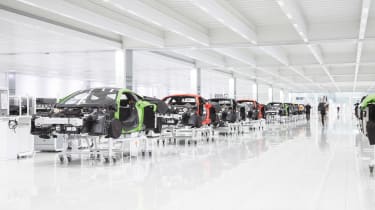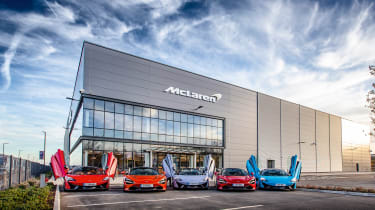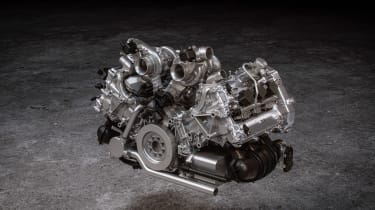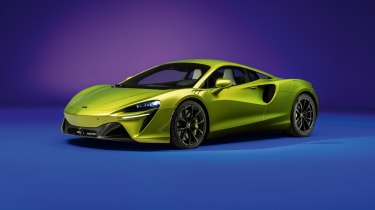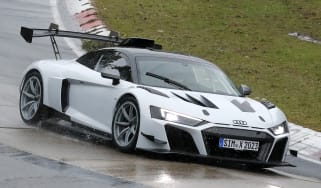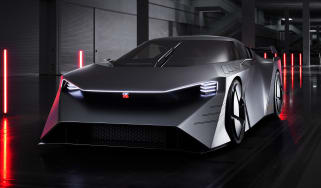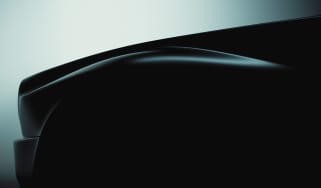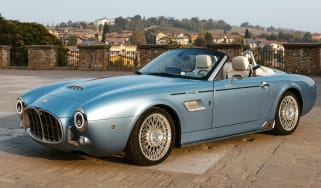McLaren's next generation – new CEO Michael Leiters on his mission to reform the brand
New CEO Michael Leiters is on a mission to raise McLaren’s game, promising a streamlined range, higher quality and no more excuses
It wouldn’t be the British car industry if it didn’t lurch from triumph to disaster with inescapable regularity. Regardless of the sector that UK companies operate in – and the sunlit uplands that they occasionally enjoy – there always seems to be a cloud on the horizon ready to rain on their celebrations, and in some cases wash them away completely.
For every Range Rover scaling new heights of profitability, there’s a Jaguar limping through losses. For every Caterham, Ariel, Morgan or BAC there’s a TVR, Westfield or Keating (remember them?). And then there’s Aston Martin, Lotus and McLaren, who regularly enjoy drinking to their successes with little thought of the hangover to follow.
McLaren’s hangover might not be as bad as the one that has reduced bosses at Gaydon to mainlining Nurofen, but then not having all your financial laundry aired in public does have its advantages. It’s also no worse than the morning-after-the-night-before currently being felt in Hethel, although it’s no better either. Both Lotus and McLaren have struggled in 2022 with the launches of all-new sports cars, delayed to such an extent that mid-cycle facelifts surely won’t be far behind the first customer deliveries.
While Lotus puts Emira delays down to parts supply issues, the pandemic, Brexit and the war in Ukraine, new McLaren CEO Michael Leiters puts Artura delays down to the car simply not being good enough. ‘There should be no compromises,’ he insists. ‘If you are willing to compromise you will lose quality, and the whole company has to understand what an important asset quality is.’
> Aston Martin sells £78m stake
Leiters cut his teeth at Porsche on his way to becoming chief technology officer at Ferrari, so he knows that quality is what brands like these trade on. Which is why one of the first big decisions he took at McLaren was to delay the launch of the Artura.

‘What I heard from my team here is that in the past we accepted a non-mature product and would launch it and deliver it to the customers. The Artura was the first project where we didn’t do that. We saw that the car wasn’t mature, so we stopped deliveries. We already had a significant delay in our production line at the time and we reduced [production] to zero [cars] a day to fix our quality problems.
‘Doing this risked the financial position of the company, but I think this was a very important change we made. A very important message we give to our dealers and customers: that we have understood that in the future quality will be our focus. No longer will we say “the car is driving so fast and is so engaging and whatever, so please forgive us some quality issues”. Not any more.’
Leiters joined McLaren in the summer of 2022, having left Ferrari the previous December. He won’t disclose when he accepted the role vacated by his predecessor, Mike Flewitt, but does say that he didn’t have time to do detailed due diligence before joining.
What he found at McLaren was broadly what he expected – ‘some things were worse, some things were better’ – with quality firmly in the former category. But he also believes that McLaren is still leaning on the start-up story too much and needs to take the next step. ‘We’re not young enough that we can still have compromises. We have to develop into a more mature organisation.’
Leiters also found a model portfolio with a lot of overlap – too much for his liking. ‘What we are working on now is a streamlined product line-up, which has clearer positioning and a clear hierarchy of every product.’ The days of the same powertrain, the same tub and chassis and, in Leiters’ own words, ‘the same design’ appear to be over. He wants a design language for the brand, identifiable as McLaren, but he’s clear that there have to be specific looks for specific models.
While the mid-engined McLarens will live on, they will head down different paths to differentiate them. ‘With the Artura this is our first step – a V6 hybrid compared to the 720S which is a V8, no hybrid. We will go further still in the different cars McLaren will offer.’ How much further? A front-engined ICE car isn’t ruled out, neither is some level of electrification, and an SUV is an obvious possibility when you look at Leiters’ back catalogue. He’s also interested in one of his former employers’ other products: the Taycan. But a McLaren supercar powered by electricity alone? Don’t hold your breath.
‘I’m not convinced EV technology is mature enough to make a supercar. If you have a supercar, it has to be light. Yes, it has to be fast and it has to have a certain range autonomy, even if you’re pushing it to the limit, but if you take today’s technology and even the technology that is coming, it will still be difficult to make an electric supercar that you can use as you do today’s ICE supercars.
‘The power itself will be less important. You can buy cars today with 1000kW [1340bhp] but with acceleration you’re getting sick. So you have to invent something else that can differentiate you because having 1000 or 1200 horsepower is not a differentiator anymore. Vehicle dynamics will be one of the most important differentiators between the brands in the future.’
Away from the cars, there’s the business side of McLaren, which has been far from healthy for over half its life. Ron Dennis’s acrimonious split from the group is considered by some to have been the spark that ignited the financial fires the firm has been putting out ever since, though a turbulent market and product overlap are also considerable factors.
Although McLaren Automotive is now a tenant of the McLaren Technology Centre rather than the landlord, Leiters considers the value of MTC to both cars and customers to be too high to consider relocating to a more cost-efficient base, though he does see the need to update its ageing production facility. He’s also not averse to expanding to other parts of the country, as with the McLaren Composites Technology Centre in Sheffield.
But while the shareholders, the biggest being Bahrain’s Mumtalakat investment fund, have been supportive, providing funds during the dark days, they clearly want a return. To achieve this and deliver on Leiters’ strategy (Flewitt’s ‘Track 25’ plan is at the bottom of the MTC lake) will require McLaren to form a technology partnership with an OEM (think BMW rather than Audi) capable of supporting his ambitions and saving the millions that make a difference between a dirty great big loss and a nice healthy profit. It will also require McLaren, or rather Leiters, to be brave when it comes to pricing, which would mean the next generation of cars being priced at no less than £200,000, which might be hard to swallow for those who look to McLaren for an affordable entry to supercar ownership.
We are some way off from the first Leiters McLaren. What will such a car be like? Lightweight, performance-driven and driver-focused are all givens. It will also be relevant not only to what the customer wants but crucially to what the company needs to survive then grow. Volume won’t be chased at the cost of profitability, models won’t be released to chase a headline. It sounds simple but getting there will require Leiters to push McLaren to be braver, bolder and more ambitious than it was during its first decade.


